Adding negative keywords is one of the most important things needed in every PPC account. Oftentimes, we focus on increasing or decreasing keyword bids to gain more conversions. When we add negative keywords to the account, this helps the platforms shift our budget into what is working and avoids our ads showing for terms that aren’t relevant. This tactic is one piece of the PPC optimization puzzle that tends to yield a positive return on investment.
A similar strategy can be used when making adjustments for locations, devices, and ad schedules. Instead of increasing bids on what is working, it can be more beneficial to add negative modifiers for what isn’t working. This approach can reduce the amount of spend applied to under-performing settings and allow more budget for what is working.
Devices
In the settings, under “Devices,” you can review performance by device. Depending on the vertical as well as the website, performance can vary by device.

In this account, the tablets have the lowest volume and the highest CPA. Adding negative modifiers can help reduce the amount of spend for this device. Since the mobile position is rather low, it may be worth raising the mobile average ad position. This tactic might be a place where a minor positive bid adjustment can help without driving up the desktop volume.
Ad Schedule
In the settings, under “Ad schedule,” you can review the performance of days of the week and hours to determine if there are any time periods where conversion performance is poor.
Day Of The Week
Under the “Schedule details,” drop-down menu, select “Day of the week.”

In this campaign, we can see that Sunday is converting, but has the highest cost per conversion compared to the rest of the days of the week.

It might make sense to reduce bids on Sunday to allow our budget to shift to other days with better conversion performance.
Hour Of The Day
You can also view the performance for the hour of the day to determine if it would make sense to create a custom ad schedule. In this view, we see there are times when the cost-per-conversion is high.
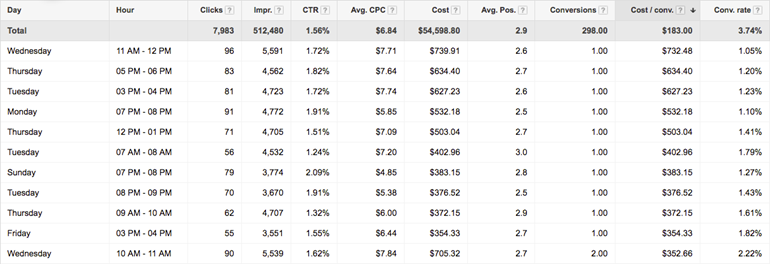
It would make sense to download the data and determine the top and worst converting time periods. AdWords will allow you to target six different time periods within a day. Adding negative modifiers to under-performing time periods can help reduce wasteful spending.
Locations
If you are running a nationwide account, one approach might be to target the United States. One problem with this approach is that you cannot easily see the performance by location.

View Location Reports (Geographic)
In one of our top converting campaigns, our CPL is almost $50. One way to improve performance might be to review the locations on a granular level. Select the location, click on “View location reports,” > “What triggered your ad (geographic).”

Location Filters
Under this view, if you check the United States again, you can view details by the state level.
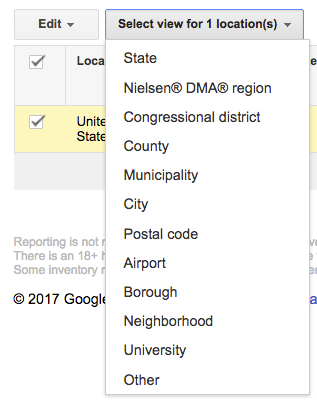
Non-Converting Locations
In this view, I chose to filter the view by state. Then I created and saved a filter to be able to quickly identify the locations with spend that isn’t converting.
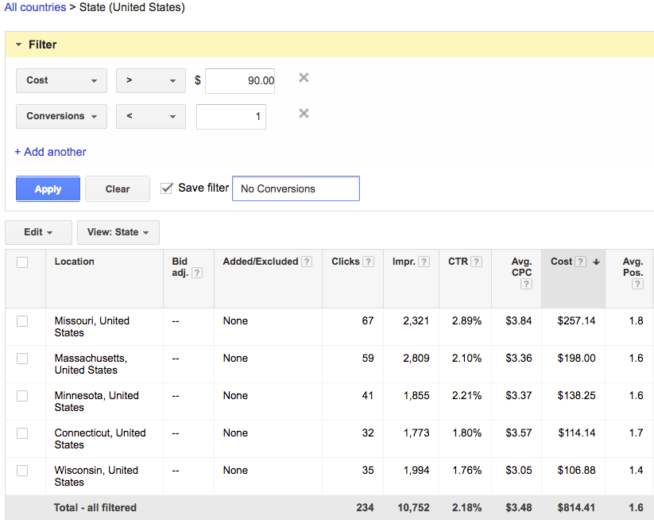
In this account, it would make sense to add these locations with a negative bid adjustment of 20% to reduce the amount of budget being spent. If you select all these locations, you have the option to target these locations and apply a negative bid adjustment.
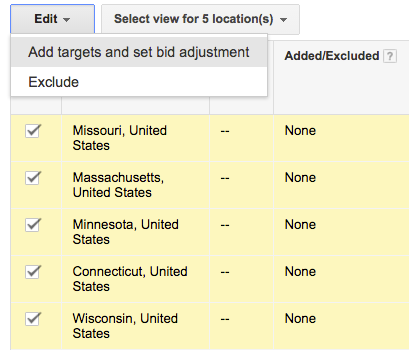
High CPA Locations
It might make sense to review converting locations with a higher CPA. Creating and saving another filter can help me quickly find poor-performing locations. We can choose to target these locations with a negative modifier to help reduce the spend in these locations.
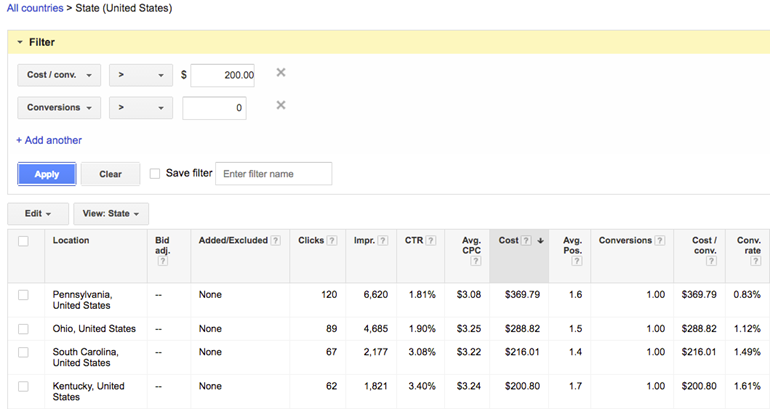
Top Converting Locations
Creating filters for the top converting locations is also a great option. This allows you to apply positive bid adjustments for the best performing locations.

Sometimes applying positive bid adjustments results in more spend and a higher CPA and not necessarily more conversions. Consider applying smaller bid adjustments and monitor conversion performance changes closely.
Under-Performing Cities
In the screenshot above, we can see that Texas is one of the top converting locations with a CPA that is almost $51. Viewing these details at DMA or city level can help you identify any poor-performing locations within the state that are driving the costs up. It may be a good idea to exhaust all basic optimization options before adding locations at this level.
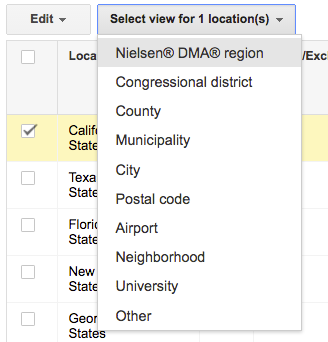
Locations By DMA
In many accounts, California is one of the top spending locations, but sometimes the spend is greater than the ROAS or CPL.
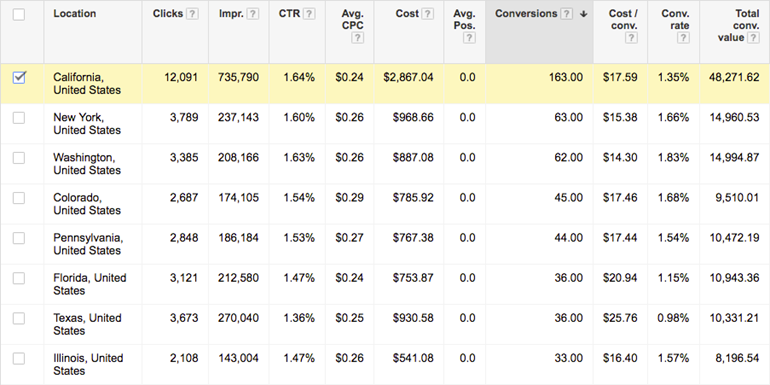
In this account, adding a negative modifier to California is one way to reduce costs. However, taking it one step further may be a better option to maximize the revenue or lead performance. We can review performance by DMA or even city level to determine if any cities are under-performing or providing the greatest return and bid accordingly.
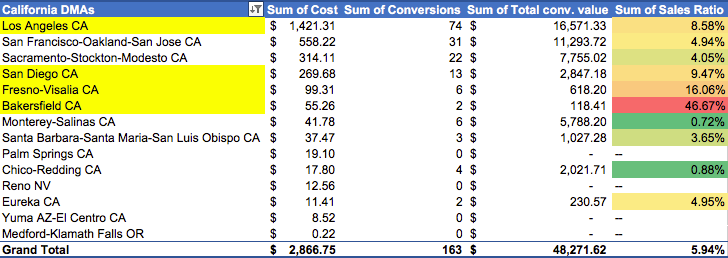
We can see the areas with the lowest sales ratio are Los Angeles, San Diego, Fresno, and Bakersfield. Targeting these locations with minor negative bid adjustments could help to reduce the spend slightly in these locations.
In California, we can see the DMA locations San Francisco and Sacramento have the highest cost-per-conversion. We could choose to target these locations with a negative bid modifier to reduce the spend in these locations.
Locations By City
If your account has enough data, you could drill down further by city, zip code, and even neighborhoods.
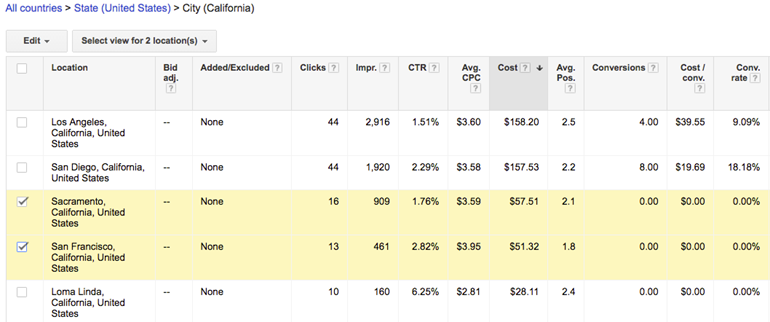
Depending on the clients goals or vertical, targeting by neighborhood might make sense. The real estate vertical is extremely competitive and targeting by neighborhood might be a great option in controlling costs.
Target By Household Income
Another things you can do within locations is target by houeshold income levels. Targeting by income level is very precise and more accurate than something like gender or age targeting. This data is based on the locations approximate average income level. To add income level targeting, under Locations, select “+Locations,” > “Advanced, under Location groups,” toggle to “Demographics,” selection the location and add the household income tiers.
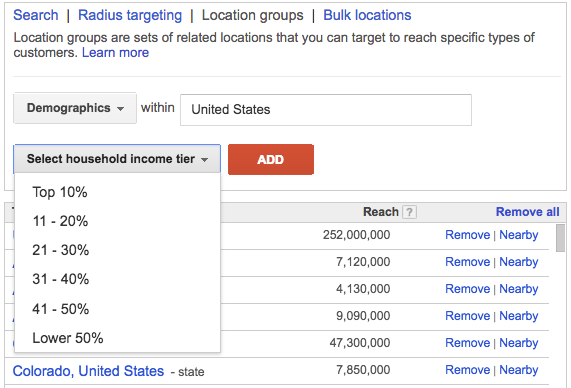
Adding all the income levels will allow you to increase or decrease modifiers based on performance.
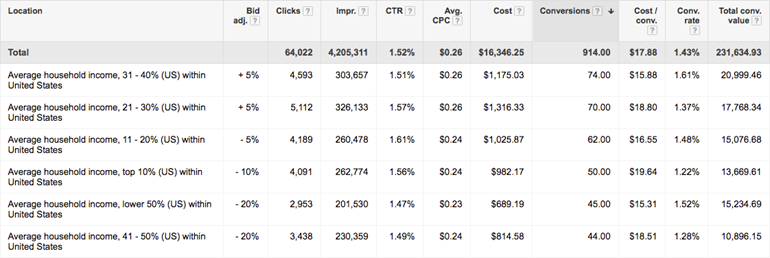
In this account, we found the best performance was in the income brackets between 21 – 40%. In order to improve performance you can add negative modifiers to the worst performing tiers. Keep in mind, the income targeting does not include everyone, so you will also want to target either United States or individual states.
Additional Thoughts
Negative modifiers can be added to age and gender within Search and Display campaigns. However, you will want to keep in mind that these settings are not as accurate as locations and device statistics. Consider how often people share computers and use the same profile. In Shopping campaigns, you can also decrease bids for under-performing products to help your budget shift into products with better historical performance. Hopefully, this information will help you find other ways to optimize your account and eliminate wasteful spending.



